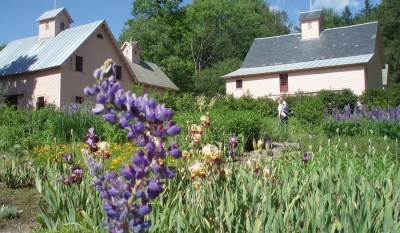Many aspects of large agricultural projects and farming can be scaled down to work in a suburban or small homestead setting. Cover crops are one method that can work very well for people with small amounts of land that they would like to put to use.
If you aren’t familiar with cover crops, you’ll be happy to know that it is a very simple technique that isn’t much different than planting a lawn. While a lawn may be fairly useless in a homesteading situation, cover crops offer numerous benefits.
What are the benefits of cover crops?
Cover crops are any type of crop plant that is planted in unused or resting areas of land for some beneficial purpose. These purposes can include but aren’t limited to:
- Adding fertility back to the land
- Adding fertility into over-processed soil (gardens)
- Improving overall soil quality
- Preventing soil erosion on bare land
- Fighting against disease and pests
- Suppressing weeds
- Feeding livestock and/or wildlife
Overall, cover crops are quite versatile and are a great tool for any land owner or gardener. Benefits like weed suppression and fertility improvement, plus the low intensity care needed to grow cover crops, mean you can use this technique easily on underdeveloped parts of your land or to prepare areas in which you plan to garden.
Get Delicious, Nutrient-Dense Heirloom Seeds Here!
Cover crops as green manure
Probably the number one way homesteaders can use cover crops is for soil fertilization purposes. Green manure is a common term that describes the method of fertilizing soil with plant matter. Green manure is beneficial for a few different reasons.
Through increasing the amount of organic matter in the soil, you help improve the structure of the soil, feed the microbes in the soil, prevent nutrient leaching and improve nitrogen availability to certain plants. Green manure cover crops also help protect your soil during the fall and winter. Come spring you won’t have to deal with hardened, weathered soil that makes planting difficult.
The story continues below the video
Cover crops for livestock
Another excellent way in which survivalists with small acreage can use cover crops is to grow them for livestock. Cover crops like alfalfa and clover are often relished by most livestock and add more nutrition to plain pasture grass. Cows, sheep, goats and other grazers aren’t the only livestock cover crops can work well with. You can also grow cover crops for the purposes of chicken or rabbit tractors.
When it comes to feeding livestock, you generally aren’t going to want to plant your space completely with the cover crop, depending on what crop you are using. You can, however, seed in cover crops along with regular pasture seed or “spot plant” cover crops in dirty patches. The latter technique can be especially useful for dealing with worn down areas of pastures that have occurred, since natural regrowth is extremely difficult in dead areas.
Also, always double-check that your cover crop of choice or the crops included in a mix, if you buy a mix, are all safe for the livestock you plan to eventually graze over it.
Best types of cover crops for small land
 There are a few different types of over crops that are suitable for small-scale homesteads and/or gardens. When selecting a cover crop it is important to take a few things into consideration, such as the region you live, the purpose behind using cover crops, and how long the crops will be in the ground.
There are a few different types of over crops that are suitable for small-scale homesteads and/or gardens. When selecting a cover crop it is important to take a few things into consideration, such as the region you live, the purpose behind using cover crops, and how long the crops will be in the ground.
While the following cover crops are great for any land, be careful when planting cover crops in gardens. Growing grass cover crops in gardens, particularly garden beds, isn’t advisable.
The Secrets Of Sea Minerals To Grow More “Nutritionally-Dense Food” Than You Can Possibly Eat!
1. Buckwheat
Buckwheat is hands down one of the best crops for land that has a weed problem. Buckwheat is excellent for smothering out weeds and other problem plants. Despite not being a legume, it still does very well in gardens and raised beds. Unlike other popular cover crops, buckwheat doesn’t overwinter. Instead, plant in spring.
2. Vetch
Vetch is a legume cover crop that can be sown by itself or as an addition to grass cover crops. Vetch is a great introductory cover crop as it’s versatile (grow it in pasture or raised beds) and is forgiving of mistakes. Vetch is also a good choice for soils lacking nitrogen and does well in pretty much any soil, even fairly poor soil.
3. Rye
There are a couple of types of rye grass, but generally annual rye grass is the most common. This type of rye grass is excellent for weed control and can also be overwintered if you plant in the fall. Rye grass can be difficult to deal with in a raised garden bed setting but is ideal for in-ground beds, orchards or food forests. Rye grows quickly and can be easily combined with a legume like vetch.
There are other types of cover crops that you can use in garden beds, depending on what you wish to achieve. Asking fellow gardeners in your region is a great way to learn what crops do well in your area. You can find seeds and even mixed bags of a variety of cover crops from most nurseries.
Have you used cover crops? Share your advice in the section below:
Do You Know The Biggest Mistake Homesteaders Will Make In Their Garden This Year? Read More Here.
 Off The Grid News Better Ideas For Off The Grid Living
Off The Grid News Better Ideas For Off The Grid Living





